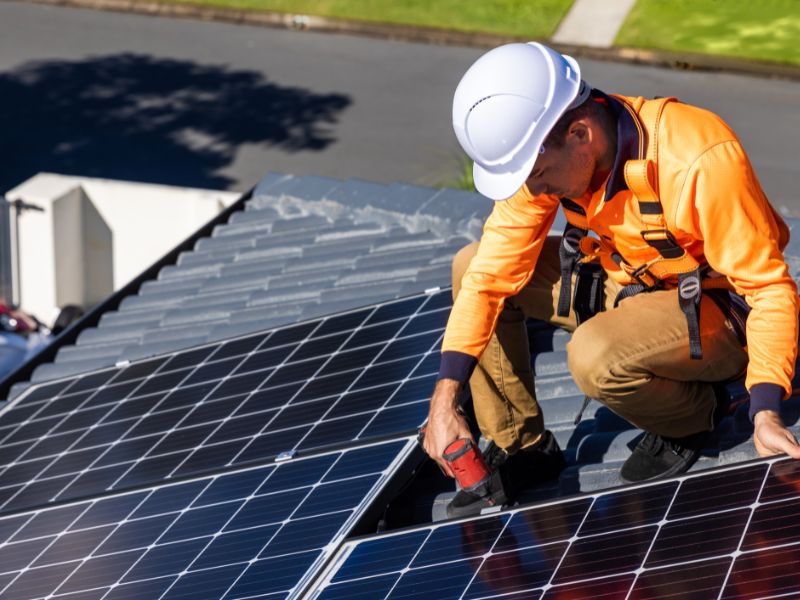In recent years, schools across the globe have been grappling with steadily rising energy bills, a trend that not only strains their budgets but also diverts funds away from educational programs and resources. Amidst these financial challenges, renewable energy solutions, particularly solar panels for schools, have emerged as a beacon of hope. Solar energy offers a sustainable path forward, promising significant reductions in energy costs while contributing to environmental conservation. This blog explores the transformative potential of solar panel projects in schools, delving into how they work, their benefits, and the steps involved in implementing such initiatives.
The Rising Energy Challenge in Schools
The modern educational facility is more than just a place for teaching and learning; it’s a dynamic environment equipped with technology-laden classrooms, laboratories, and computer centers—all of which demand a substantial amount of energy. As energy costs soar, schools find themselves in a financial quandary, forced to allocate a larger portion of their budgets to utility bills. This financial pressure comes at the expense of essential educational resources and improvements. The pursuit of renewable energy sources has become a priority for educational institutions aiming to mitigate these financial challenges and promote environmental stewardship among the next generation.
Why Solar Panels?
Solar energy stands out among renewable energy sources for its ubiquity and sustainability. It offers a plethora of benefits, chief among them being the substantial reduction in energy bills. Solar panels are reliable, have a low environmental impact, and once installed, harness the sun’s free and abundant energy. They represent a long-term investment that can pay dividends in the form of savings and environmental benefits for decades. Furthermore, solar panel projects in schools serve as a powerful tool for hands-on learning, providing students with real-world applications of science, technology, engineering, and mathematics (STEM) principles.
Case Studies: Success Stories
Across the globe, numerous schools have taken the leap into solar energy, each with its own unique story of challenges, solutions, and successes. For instance, a school in California saw its annual energy bills drop by 70% after installing a rooftop solar system, savings that have been redirected towards new educational materials and scholarships. Another example comes from a remote school in Australia, where solar panels not only reduced energy costs but also provided a reliable power source, mitigating previous issues with power outages. These solar energy case studies highlight the practical benefits of solar energy in educational settings and underscore the potential for replication in schools worldwide.
How Solar Panels Work to Reduce Energy Bills
Photovoltaic systems convert sunlight into electricity through photovoltaic cells, providing a green alternative to traditional energy sources. For schools, this means the ability to generate their own power during the day, reducing their reliance on the grid and, consequently, their energy bills. Additionally, many regions offer net metering programs, allowing schools to sell excess electricity back to the grid, further offsetting energy costs. Government and private grants can also help schools cover the initial installation costs, making solar panels a financially viable option even in the short term.
Implementation Steps for Schools
The journey toward solar energy involves several key steps, starting with a solar panel feasibility study to assess the school’s energy needs and the potential for solar power generation. Following this, detailed planning and design work lays the groundwork for procurement and installation. It’s crucial for schools to engage with the wider community, including parents, local businesses, and government agencies, to garner support and potentially secure additional funding. Once installed, ongoing maintenance ensures the longevity and efficiency of the solar panel system, maximizing the benefits for the school.
Challenges and Solutions
While the benefits of solar panels are clear, schools may encounter several obstacles along the way. Funding remains a primary concern, with the initial outlay for solar panels posing a significant barrier. However, innovative financing solutions, such as power purchase agreements (PPAs) and solar leases, allow schools to install solar panels with little to no upfront costs. Space constraints can also present challenges, especially in urban areas, but advances in solar technology have led to more efficient panels that require less space to generate significant amounts of electricity.
The Bigger Picture: Environmental and Educational Benefits
Beyond the immediate financial savings, solar panels contribute to a larger vision of environmental sustainability. By reducing greenhouse gas emissions, schools can play a pivotal role in combating climate change. Moreover, solar panel projects offer invaluable educational opportunities, enabling students to learn about renewable energy technologies and environmental conservation firsthand. These projects can inspire students to pursue careers in the growing field of renewable energy, positioning them as future leaders in the fight against climate change.
Solar panel projects offer a promising solution to the dual challenges of rising energy costs and environmental degradation. By adopting solar energy, schools can achieve significant savings, provide educational opportunities, and contribute to a sustainable future. The journey to solar energy may have its challenges, but the success stories of schools around the world serve as a testament to its viability and impact. As we look to the future, the integration of solar panels in schools stands as a shining example of how education can lead the way toward a more sustainable world.

